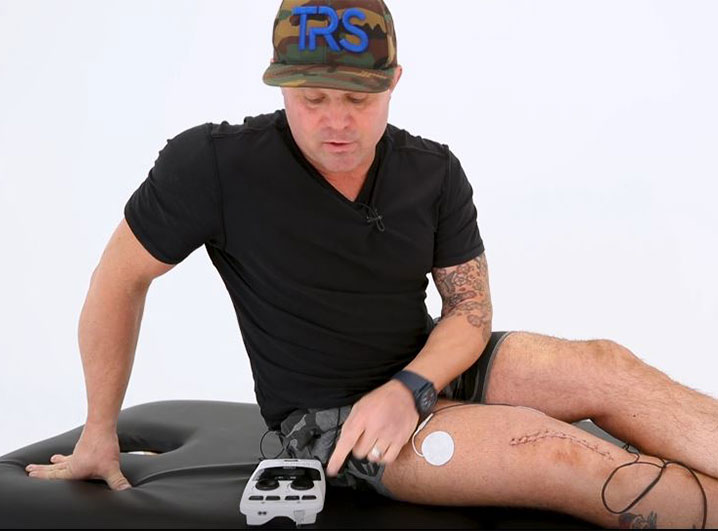Pad Placement for Electrical Stimulation-Tips & Tricks with Dr. Kelly Starrett, DPT
How to Get More Out of Your Device with Better Pad Placement
Dr. Kelly Starrett, DPT reviews a different way to approach how and where to place electrode pads to get the most benefit from electrical stimulation, specifically NMES (neuromuscular electrical stimulation). The device he’s using in this video is the H-Wave OTC.

After his knee surgery, the most important thing for him to do was to engage the muscle and tissues right away in order to prevent muscle loss or disuse atrophy. He also wanted to make sure the connection between his brain and muscle tissues in his leg stays strong in order to prevent the brain from becoming fearful to move due to pain.
Just like post-surgical (or post-injury) swelling can inhibit movement and function, so will pain. If you can stay ahead of pain, you can most likely maintain most of your muscle mass and maintain function.
Per Kelly, a rule of thumb to follow: if you’re getting contraction in any muscles in your leg (or affected area), it’s going to encourage lymphatic drainage of the whole system. The goal is to get the best contraction possible, even if it’s not directly on the muscle belly.
Now, if you’re like Kelly and after surgery you might be worried about pulling an incision by contracting the muscles around the incision, he recommends moving the pads away from that specific area and trying a different pad placement for electrical stimulation. If you can still get a strong contraction, you’ll still receive the benefit of a global flush – good in, bad out.
Similarly, if you’re worried about straining an already swollen or painful area after injury, you can move the pads away from that area until you get a strong contraction and you’ll still receive benefit since all the tissue are connected.
Kelly calls this approach “informed freestyling” – where you can change the pad placement for electrical stimulation to different areas until you get the contraction you’re looking for. Just always keep in mind to try and put the pads wherever you can get the most massive contraction. This movement of muscle contractions will also tell your brain that movement is ok, since you’re doing it and it’s not painful. This will help prevent the fear of movement that often happens after an injury or when we’re in pain.
Note – If you’re having a hard time getting a strong contraction because you’re swollen or some other reason, you can always try “crossing the spine” with the pads. This is a unique type of pad placement for electrical stimulation. The benefit of doing this is that sometimes you can get a stronger contraction by using a cross-spine position versus just staying on the affected tissues or tissues immediately surrounding the affected area.
So the two main takeaways from this video are:
- Don’t be afraid to play with your pad placement for electrical stimulation, and keep adjusting until you get the contraction you want
- Don’t be afraid to cross the spine – this may provide an even stronger contraction and won’t damage sensitive tissue